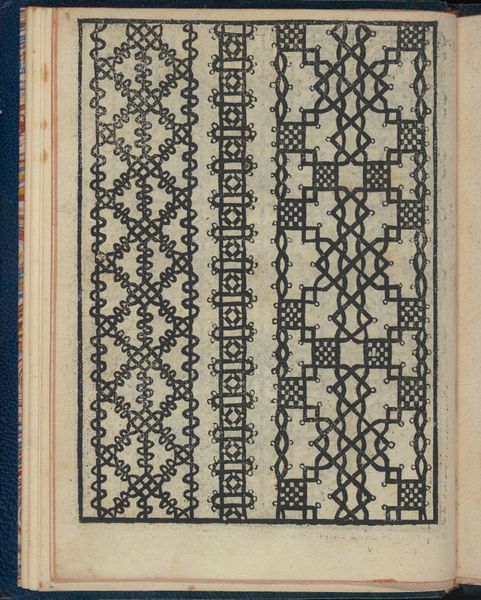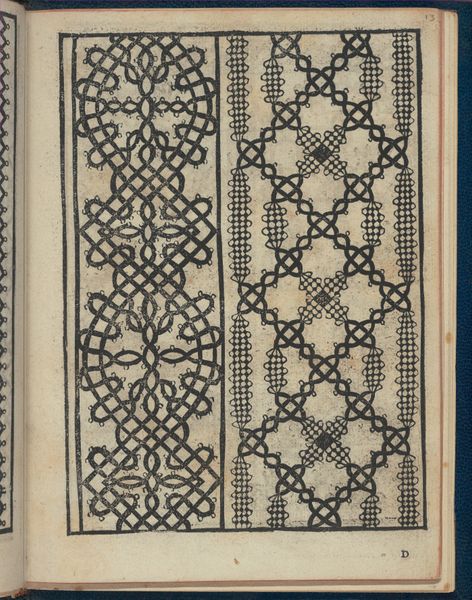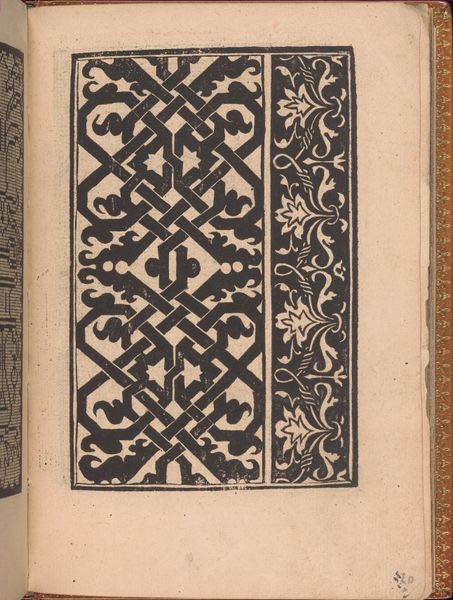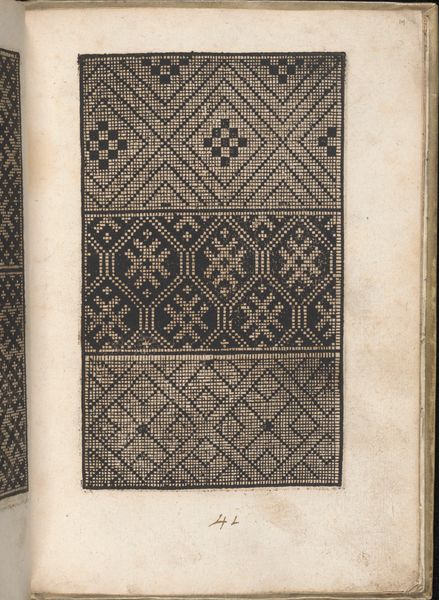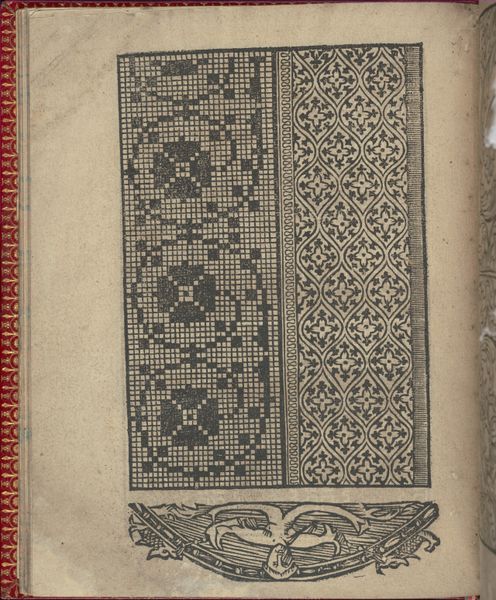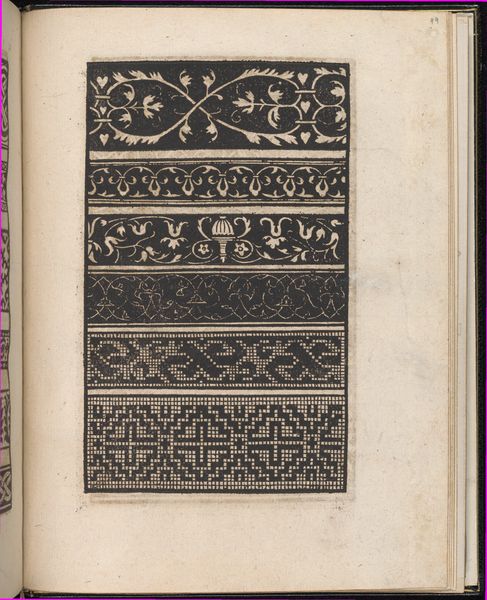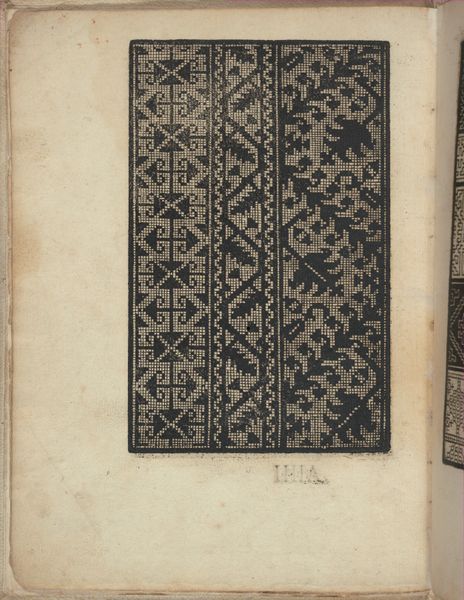
Le Pompe: Opera Nova, page 6 (verso) 1557
0:00
0:00
drawing, print
#
drawing
# print
#
book
#
geometric
#
pattern repetition
Dimensions: Overall: 8 1/16 x 5 7/8 in. (20.5 x 15 cm)
Copyright: Public Domain
Curator: At first glance, this artwork pulses with a certain austere beauty, a geometric formality. The dense, intricate patterns...there's an almost hypnotic quality. Editor: That's an interesting read of it. To me, it speaks of luxury and access – of an elite readership during the Italian Renaissance. We’re looking at a page from "Le Pompe: Opera Nova", a 1557 design book by Giovanni Battista and Marchio Sessa, here at The Met. Curator: Precisely. And observing how these black lines weave across the aged paper is visually engaging, don’t you agree? The rhythm, repetition, creating two distinct yet harmonious ornamental bands, calls for a structural deconstruction. Editor: It absolutely does! Think of Venice then: the book aimed to equip lacemakers with novel designs, stimulating a crucial trade that cemented the city’s global power and its sumptuary culture. The patterns in that book codified a look, a cultural expression, and served practical purposes. Curator: I see how the pattern functions on the surface to evoke status and social meanings, yes. Though, purely on a visual level, notice the negative space crafted? And that repeated symmetry. The work almost implies endless iterations from modular segments… It feels utterly satisfying. Editor: Without printed manuals democratizing patterns, the transmission of craft and luxury was more limited by proximity or privilege. Print wasn’t only about Bibles and treatises, but it helped spread skills that created entire industries and identities. Curator: Ah, but can we just linger on the artist's ability to synthesize geometry with a fluid sense of form? Note that, the serpentine quality gives the abstract shapes an unexpectedly natural grace! It challenges the very rigidity that its purpose initially implies. Editor: A tension is embedded in design then. One wonders, for example, the readership? Did it shape, even reflect their lived experience, as well as influence global luxury aesthetics? Curator: Reflecting on its cultural import is certainly vital to a rich interpretation, but even considered as mere abstraction it’s a fascinating case study on space and shape. Editor: True. “Le Pompe” captures not just designs but moments of aspiration and early globalization. The book serves, if I can put it in formalism’s terms, as “ground zero” for global aesthetics, haha.
Comments
No comments
Be the first to comment and join the conversation on the ultimate creative platform.

